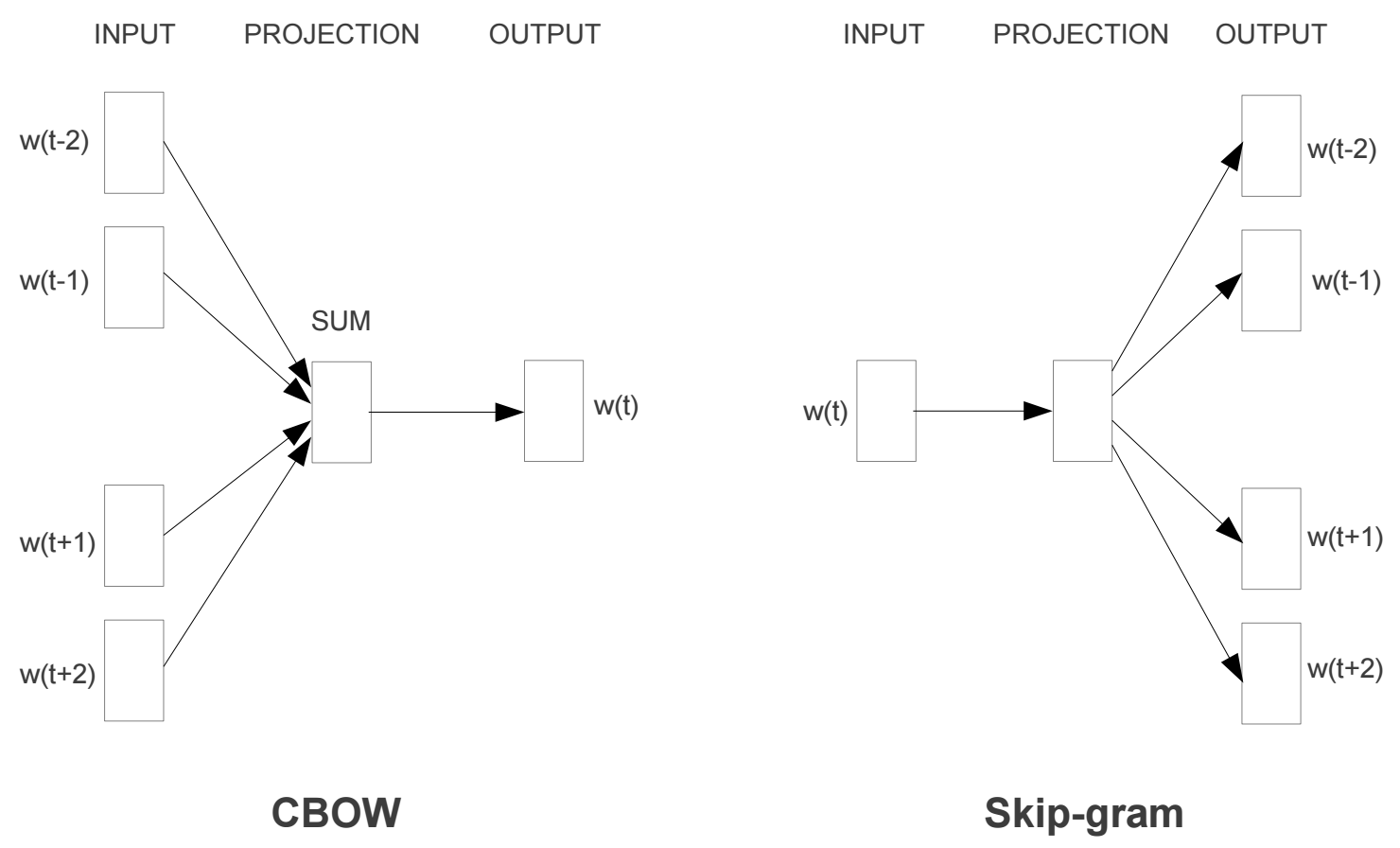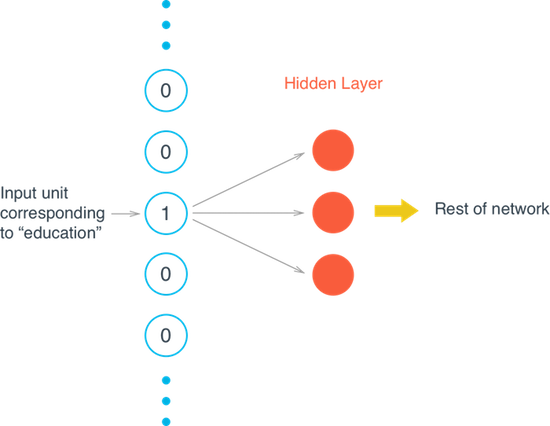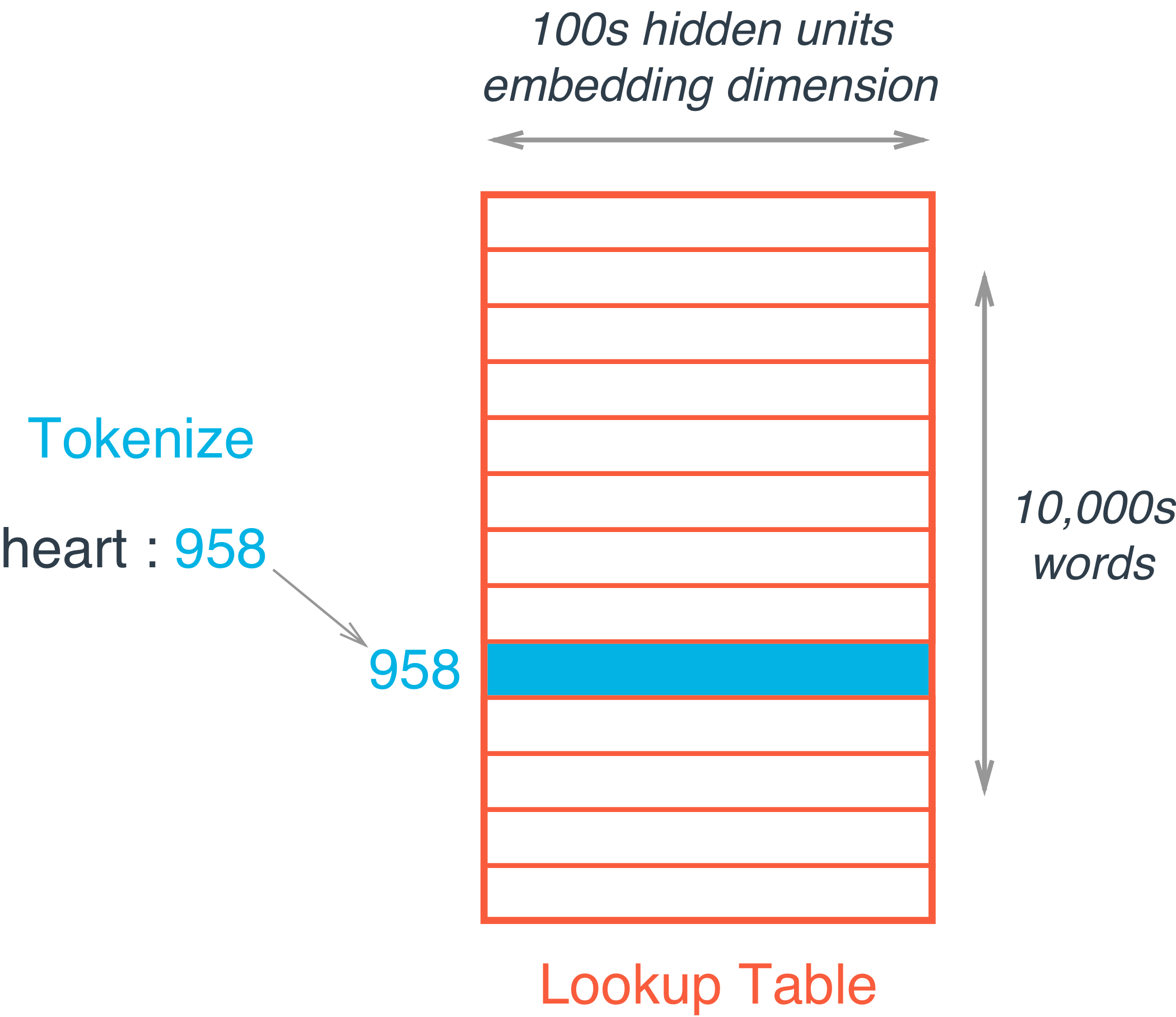The word2vec algorithm can find efficient representations by finding vectors that represent the words. These vectors also contain semantic information about the words. Words that show up in similar contexts, such as "black", "white", and "red" will have vectors near each other. There are two architectures for implementing word2vec, CBOW (Continuous Bag-Of-Words) and Skip-gram.
When you're dealing with words in text, you end up with tens of thousands of classes to predict, one for each word. Trying to one-hot encode these words is massively inefficient, you'll have one element set to 1 and the other 50,000 set to 0. The matrix multiplication going into the first hidden layer will have almost all of the resulting values be zero. This a huge waste of computation.
To solve this problem and greatly increase the efficiency of our networks, we use what are called embeddings. Embeddings are just a fully connected layer like you've seen before. We call this layer the embedding layer and the weights are embedding weights. We skip the multiplication into the embedding layer by instead directly grabbing the hidden layer values from the weight matrix. We can do this because the multiplication of a one-hot encoded vector with a matrix returns the row of the matrix corresponding the index of the "on" input unit.
Instead of doing the matrix multiplication, we use the weight matrix as a lookup table. We encode the words as integers, for example "heart" is encoded as 958, "mind" as 18094. Then to get hidden layer values for "heart", you just take the 958th row of the embedding matrix. This process is called an embedding lookup and the number of hidden units is the embedding dimension.
The embedding lookup table is just a weight matrix. The embedding layer is just a hidden layer. The lookup is just a shortcut for the matrix multiplication. The lookup table is trained just like any weight matrix as well.



